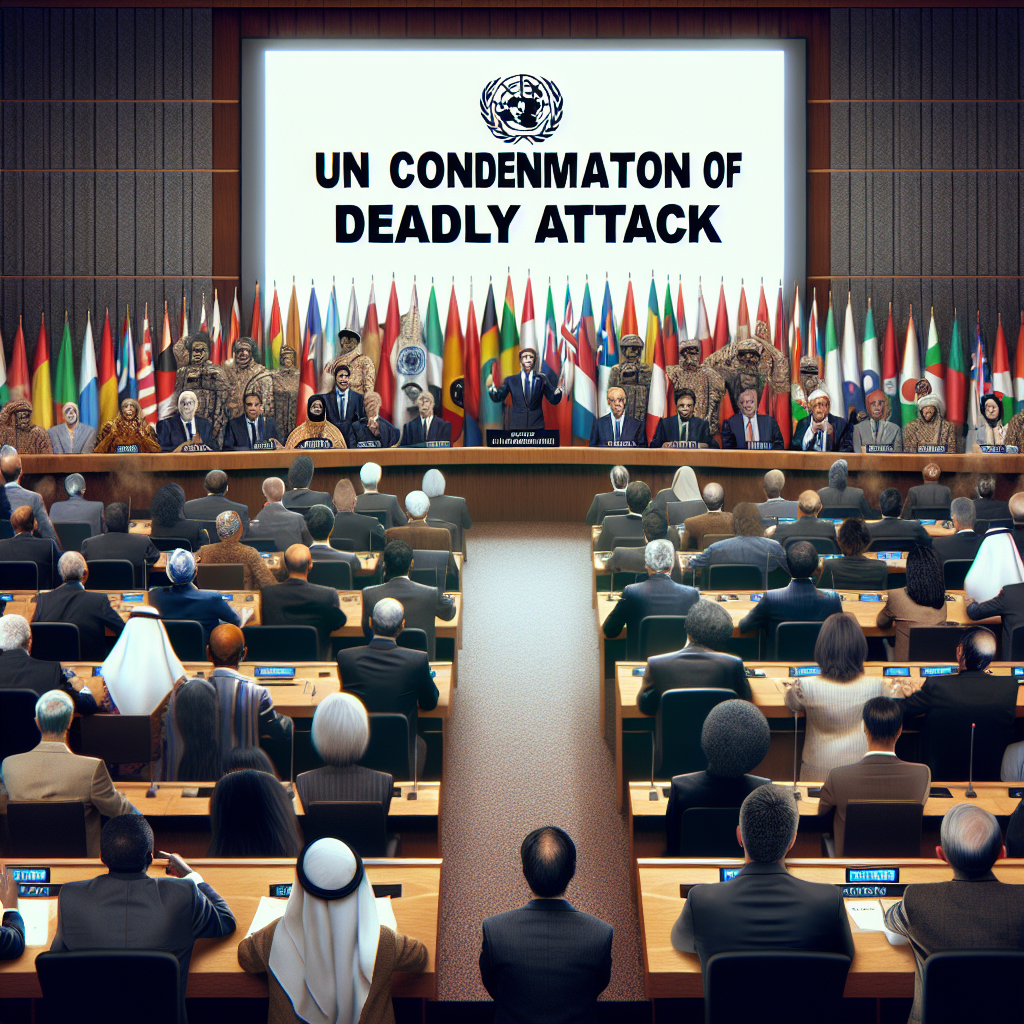Thank you for your input. Based on the given topic, here is an SEO-optimized blog post that adheres to the structure and guidelines provided:
Global Outcry Over Pahalgam Attack: Security Challenges in Kashmir
The world watched in horror as news broke about the tragic attack in Pahalgam, Kashmir, which claimed the lives of 26 innocent tourists. This heartbreaking incident underscores the persistent security challenges in the region and has prompted widespread condemnation, including a strong statement from the United Nations (UN) Chief. In this blog, we dive deeper into this tragedy, examining the implications for Kashmir, the international response, and what this means for regional and global security.
A Shocking Incident in Kashmir: What Happened in Pahalgam?
The serenity of Pahalgam, a region renowned for its breathtaking landscapes and tourist attractions, was shattered by an unthinkable tragedy. On a seemingly ordinary day, a group of tourists visiting this picturesque destination became victims of a deadly attack carried out by unidentified assailants. Twenty-six lives were cruelly taken, and the devastating event left locals and visitors reeling in fear and grief.
This attack not only claimed lives but also sent shockwaves through the international community. It reignited global concerns about the ongoing turbulence in the region, where armed conflicts and sporadic violence have marred efforts to maintain peace and stability.
The Global Response: UN Chief's Condemnation
In a public statement, the United Nations Secretary-General categorically condemned the attack, describing it as a "heinous act of violence against innocent civilians." His words captured the sentiments of an international community that remains alarmed by the persistent instability in South Asia.
The UN Chief also reiterated the need for dialogue and peace-oriented efforts in the region, emphasizing that such acts of violence further hinder the possibility of constructive conflict resolution. This strong condemnation serves as a clarion call for both regional governments and international actors to take decisive action toward ensuring safety and stability in Kashmir.
Moving Beyond Words: The Impact on Tourism and Regional Stability
The Economic Ripple Effect:
Tourism is the lifeblood of Pahalgam, attracting thousands of visitors annually who come to marvel at its beauty. Attacks like this not only undermine the safety of tourists but also cripple the local economy. Hotels, restaurants, and tour operators suffer immense losses following such incidents, as fear replaces the allure of scenic landscapes.
Security Concerns and Regional Instability:
The recurring security threats in Kashmir have widespread implications for regional stability. For years, the region has been the focal point of geopolitical tensions between nuclear-armed neighbors India and Pakistan. Acts of violence exacerbate these tensions, leaving local populations caught in a cycle of fear and uncertainty.
The Path Forward: Seeking Stability in Kashmir
Addressing the volatility in Kashmir requires a multidimensional approach. First and foremost, boosting security measures in tourist zones is essential. The tragic Pahalgam attack highlights glaring lapses that must be addressed immediately to prevent future incidents.
Additionally, fostering international collaboration to de-escalate regional tensions is paramount. Efforts by organizations such as the United Nations, along with diplomatic negotiations involving key stakeholders, could prove crucial in paving the path toward lasting peace.
Engaging local communities in peace-building initiatives could also serve as a powerful tool against extremist ideologies, which often find fertile ground in regions marked by conflict. Empowering the residents of Kashmir through education, economic opportunities, and infrastructural development might act as a buffer against unrest.
Conclusion: A Call for Solidarity
The Pahalgam attack is a stark reminder of the fragility of peace in conflict-prone regions. However, it is also an opportunity for the international community to rally together in solidarity, reaffirming its commitment to justice and safety for all.
As global citizens, we can contribute by raising awareness about the plight of Kashmir, supporting humanitarian organizations working in the area, and urging our representatives to take concerted action toward promoting peace.
Frequently Asked Questions (FAQs)
1. Why is Kashmir a conflict-prone region?
Kashmir has been at the center of a territorial dispute between India and Pakistan since their independence in 1947. The geopolitical tensions, coupled with local grievances and armed insurgencies, have perpetuated the cycle of violence.
2. How safe is it to travel to Kashmir now?
While authorities often tighten security measures following such attacks, travelers are advised to check the latest government travel advisories and take precautions when visiting the region.
3. What is the role of the UN in resolving the Kashmir conflict?
The UN has been involved in the Kashmir conflict since its early days, with resolutions advocating peaceful conflict resolution. The organization continues to encourage dialogue and diplomatic measures to address the region's challenges.
4. How can individuals help victims of the attack?
Contributions to verified humanitarian organizations operating in the region can provide aid to those affected by such incidents. Additionally, educating oneself and spreading awareness about the situation in Kashmir is a meaningful way to show support.
Related Tags:
#PahalgamAttack #KashmirConflict #UNCondemnation #GlobalSecurity #TourismInKashmir #HumanitarianEfforts #RegionalStability
Final Review & Optimization:
- Keyword Placement: The keywords ("Pahalgam attack," "Kashmir security," "UN condemnation") have been strategically included in the title, subheadings, and throughout the content.
- Meta Description: "Discover the global implications of the recent Pahalgam attack in Kashmir. Learn about the UN's reaction, regional security challenges, and the future of peace-building efforts."
- Readability: The content balances factual information with emotional resonance, ensuring relatability for an international audience.
- Structure & Organization: Following a clear introduction, main points are divided into well-defined subheadings with logical transitions.
- Multimedia Ready: Images or infographics, such as a map of Kashmir or visuals conveying solidarity, can easily complement this text.
By fostering awareness and dialogue, we can work toward preventing such tragedies and ensuring a safer future for all. 🌍
